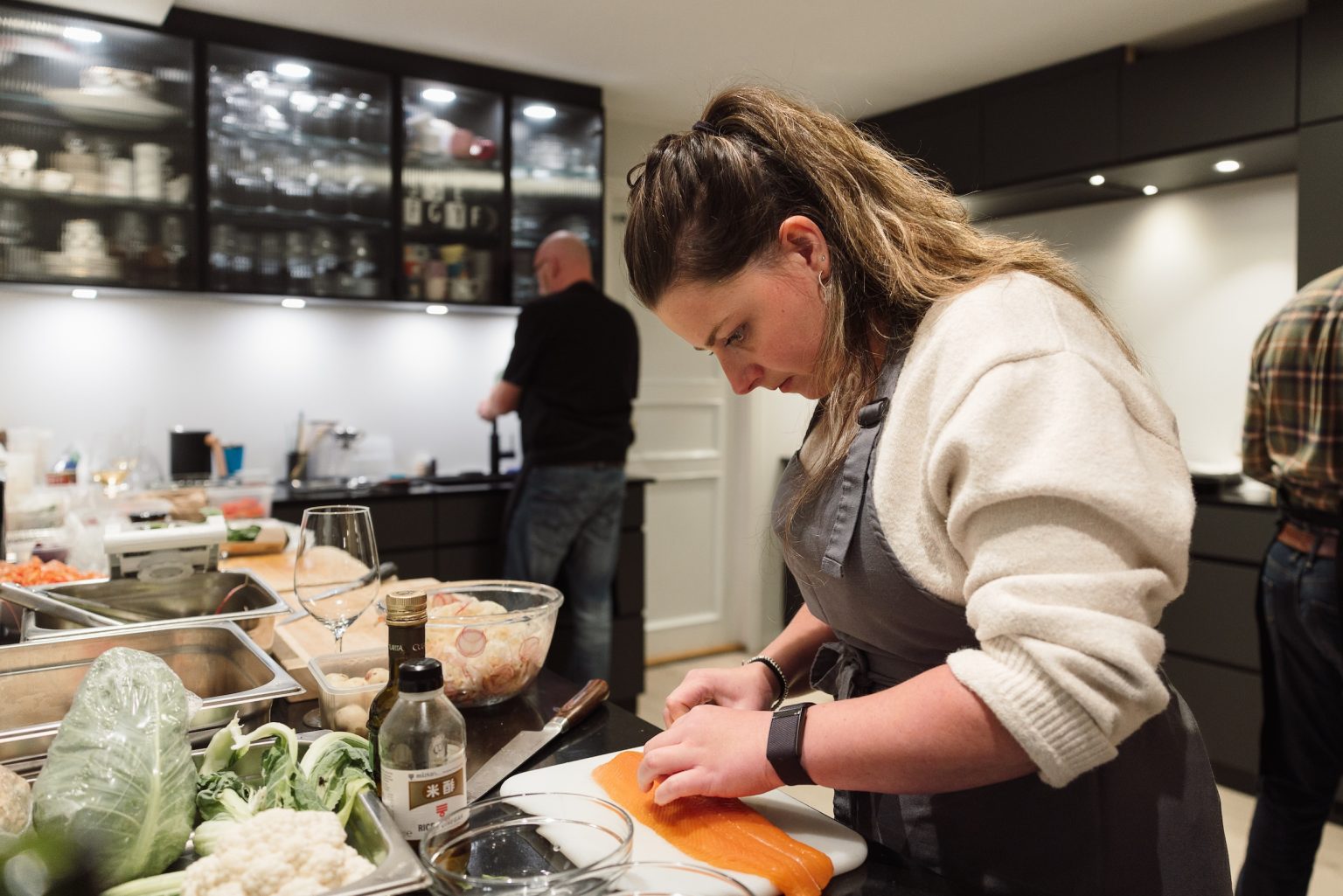A group of the UK’s brightest culinary talents recently swapped their kitchens for Norway’s icy fjords, embarking on a journey that explored the future of food from an entirely new perspective — beneath the surface of the sea. Hosted by Seafood from Norway (SFN), the immersive educational trip brought together leading chefs and hospitality educators to experience first-hand how sustainability and innovation are redefining the world’s seafood industry.
At the heart of the initiative was a simple yet profound mission: to inspire the next generation of chefs to champion sustainability not just on the plate, but across the entire food system. The delegation included some of the UK’s most promising and influential culinary figures — Simon Hulstone, Michelin-starred chef and SFN Chef Ambassador; Jonny Smith, Young National Chef of the Year 2025; April Partridge, 2023 Roux Scholar; and José Souto, Head Lecturer at Westminster Kingsway College, one of Britain’s most respected culinary institutions.
Together, they followed the full journey of Norwegian seafood, from ocean to plate, gaining an insider’s view of how one of the world’s most sustainable fisheries operates. From Kirkenes to Tromsø, the chefs witnessed the meticulous care that defines Norway’s seafood industry — from its low-impact harvesting methods to its transparent supply chains and commitment to protecting marine ecosystems.
From Ocean to Plate
The experience began in the far reaches of northeastern Norway, where the group joined local fishermen for pot fishing of the famous king crab. Here, sustainability was not a buzzword but a way of life — a demonstration of how traceability and resource management safeguard both marine life and local livelihoods.
A seminar with Norges Råfisklag, the organisation responsible for marine resource management and seafood sales, provided further insight into how science and governance underpin Norway’s reputation as a leader in responsible fishing. The chefs learned how quota systems, long-term planning and rigorous monitoring ensure the longevity of fish stocks while maintaining fair value for producers.
At Norfra’s Bruket facility, the group witnessed the delicate processing of whitefish species such as cod and haddock — staples of British menus. The chefs also discovered saithe, a lesser-known species poised to make waves in UK kitchens.
“Trying saithe as an alternative to cod and haddock was a bit of a revelation,” said Simon Hulstone. “It’s firm, holds together beautifully, and has a great flavour profile. That’s my mission now — to get saithe on people’s radar in the UK.”
Learning from the Source
A visit to the Ocean Stories Centre in Honningsvåg offered a deep dive into Norway’s salmon aquaculture and its role in providing sustainable protein to a growing global population. The chefs explored how innovation and regulation work hand-in-hand to maintain balance between food production and marine health.
The centre’s exhibits also painted a vivid picture of Norway’s fishing heritage, telling the story of coastal communities shaped by the sea for generations. For the visiting chefs, it was a reminder that sustainability is not only environmental, but cultural and human as well.
“This trip has been about teaching the chefs of tomorrow about sustainable seafood — not just how to cook it, but to understand its provenance and why it matters,” said José Souto. “Knowing the story behind the food we serve makes us better chefs, and better teachers. Living it allows us to use it with real purpose.”
A Taste of the Future
The study tour culminated in a hands-on workshop with acclaimed Norwegian chef Gunnar Jensen, where participants cooked an array of seasonal seafood — from cod and trout to snow crab and cold-water prawns — all sourced from the cold, clear waters of the Barents Sea. The session showcased how ‘blue foods’ can be both environmentally responsible and creatively inspiring.
The final day saw the Norwegian Fisheries Directorate outline the country’s robust regulatory framework — one that prioritises marine biodiversity, transparency and long-term ecosystem health. The message was clear: sustainability is not a trend, but a standard that defines Norway’s approach to food production.
Inspiring the Next Generation
For Bjørn-Erik Stabell, UK Country Director at the Norwegian Seafood Council, the initiative represents a long-term investment in culinary education.
“This is about more than showcasing our world-class seafood,” said Stabell. “It’s about investing in the next generation of culinary leaders. By immersing them in Norway’s sustainability practices, we’re helping ensure that blue foods aren’t just part of today’s menus, but tomorrow’s solutions for food security.”
As the chefs returned home, their experiences carried a shared message for the UK’s culinary scene — that sustainability is no longer a distant ideal, but a tangible, delicious reality. Through education, collaboration, and a willingness to explore alternatives like saithe, the industry can take meaningful steps toward a more responsible and resilient food future.
In a world where diners are increasingly conscious of where their food comes from, the lessons learned on Norway’s northern coast could soon find their way onto British plates — proving that the future of fine dining might just be written in blue.
To find out more about Norway’s approach to sustainable seafood, visit: https://www.norwegianseafoodcouncil.com/wildfish/cod/sustainable-cod-and-management-of-fisheries/



